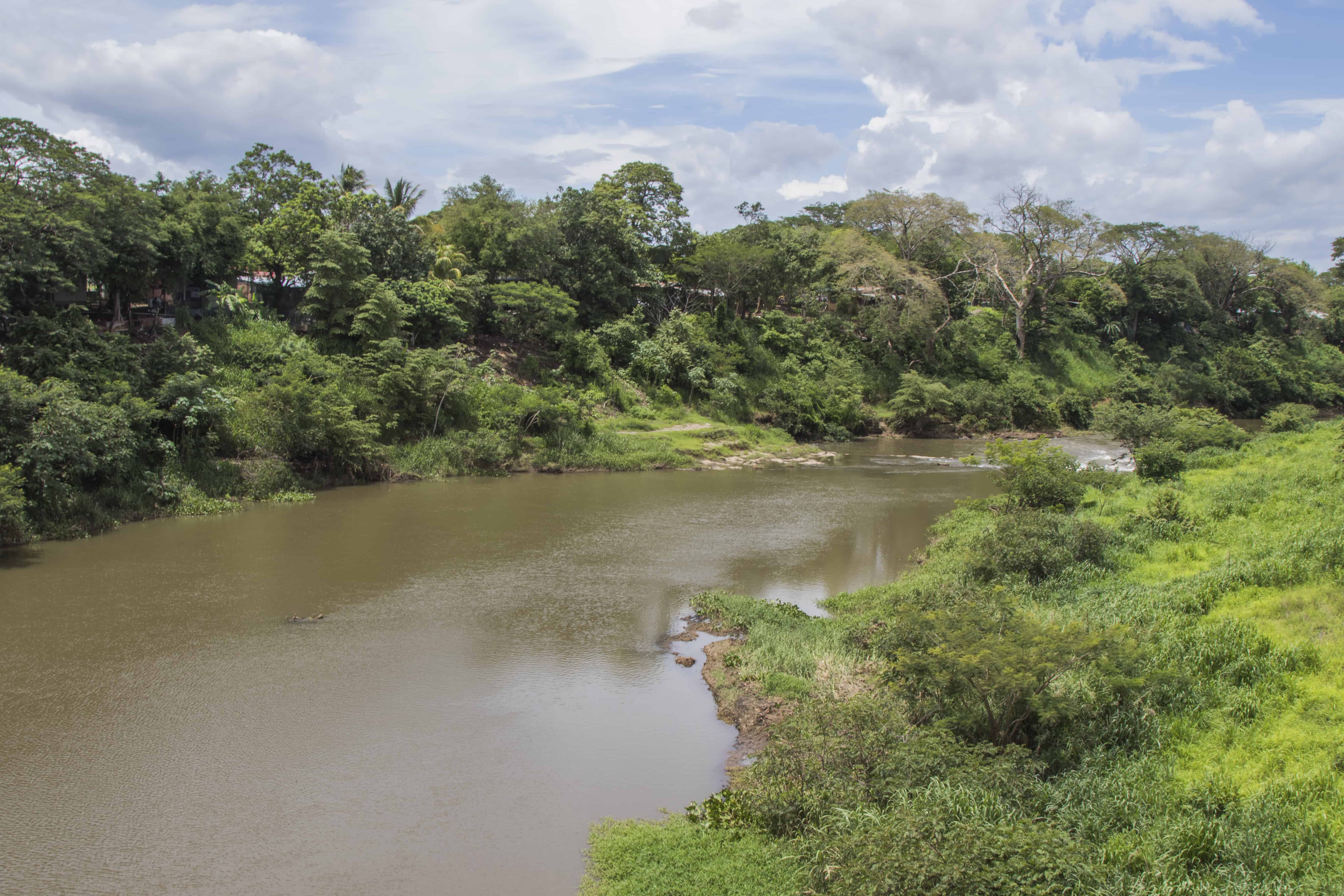Several months into the rainy season, Guanacaste is green and lush again. The severe drought that afflicted the country’s agriculture- and tourism-dependent, northwestern province has eased in recent months. But Guanacaste’s longstanding water problems remain: Coastal communities lack a reliable water source; farmers, gravel miners and municipalities squabble over available water; and the government struggles to monitor and patrol use of the province’s rivers and aquifers.
At the center of Guanacaste’s water battles is the Tempisque River — Costa Rica’s third longest — along with its tributaries and the underground aquifers that both feed it and take from it to replenish their stores. The Tempisque watershed occupies 60 percent of the land in Guanacaste province and one-tenth of Costa Rican territory.
The nearly 145-kilometers-long Tempisque River starts in the Guanacaste mountain range between the Orosí and Rincón de la Vieja volcanoes and empties into the Gulf of Nicoya, feeding a large network of mangrove-lined, protected wetlands near its mouth. It is a river of extremes, capable of disastrous floods in the rainy season and withering droughts in summer.
But the river’s natural fluctuations have been amplified in recent decades by the humans and institutions that use it. A warming, drying climate threatens to accentuate those fluctuations even more, upsetting the delicate balance among thousands of water users — big and small — and threatening the region’s environmental health.
To understand the pressures on the Tempisque River, The Tico Times and The Voice of Guanacaste joined forces to analyze the history of the river’s use, its current status and likely future. We analyzed archives from the Environment Ministry (MINAE), including the files of the five largest concessions granted to private companies to extract water — 500 liters per second and above — from the Tempisque. These concessions, the oldest of which dates back to the 1960s, are held by La Ceiba (producers of sugarcane, melons and rice), El Viejo (sugar mill), Central Azucarera Tempisque S.A. (CATSA) (sugarcane, sugar mill), Agrorice de Milano (rice and sugarcane) and Hacienda Río Seco (rice).
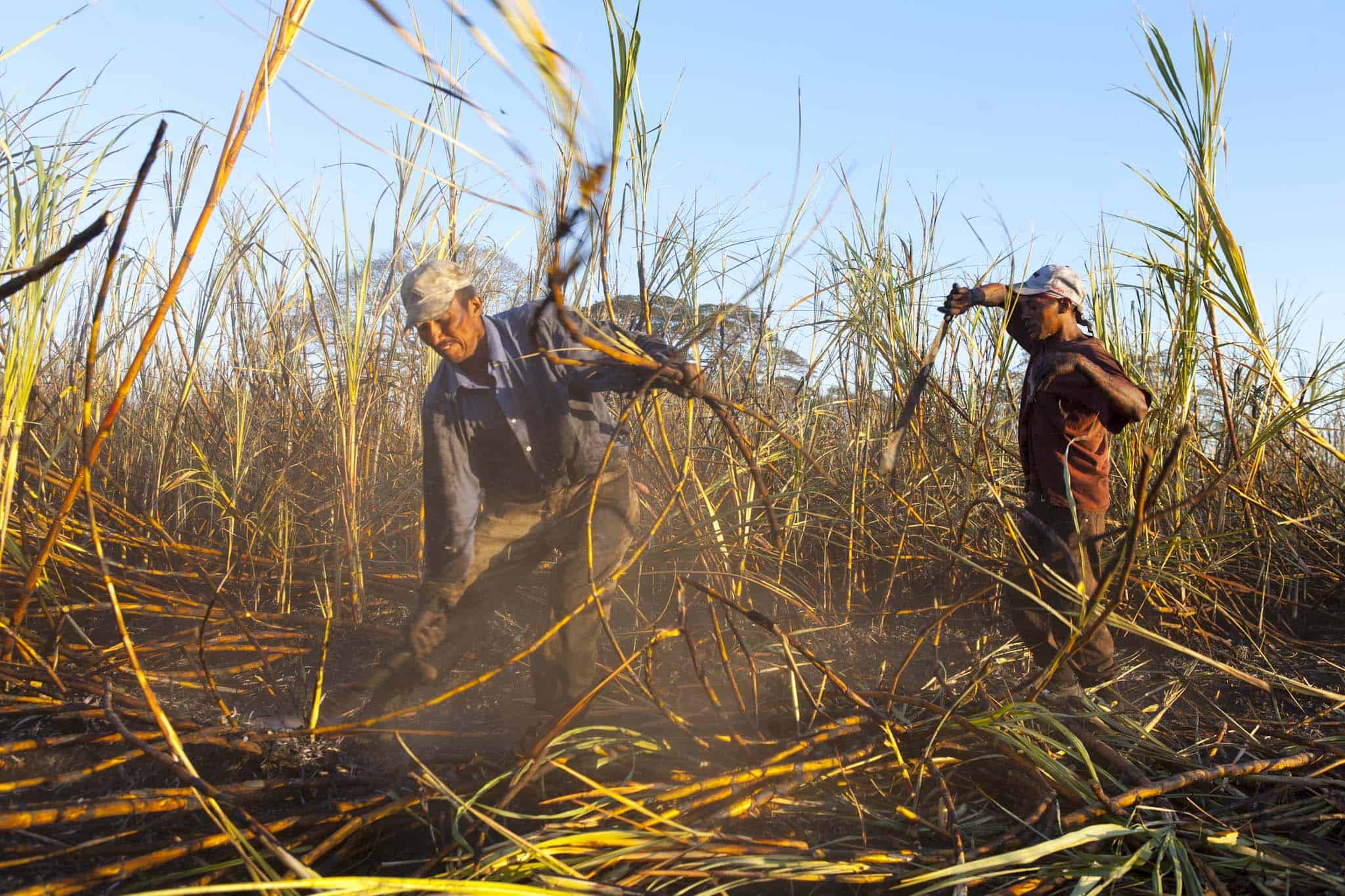
Some 90 percent of water concessions granted for the Tempisque are for agriculture.
We also examined academic studies, and interviewed experts and major players in the river’s use and management. What we found is:
- The data used to grant water concessions by the National Energy Service, the entity charged with that task until 1996, and later the Environment Ministry’s Water Department has been historically flawed.
- Most of the largest water concessions have never been evaluated in terms of their environmental impact because they predate the laws requiring evaluation. Those that have been evaluated have been done so in a cursory fashion, with no consideration of the effects on the Tempisque River as a whole and its flora and fauna.
- Not until 2003 did the Environment Ministry begin to take into account the need to leave some water in the river to support species and replenish aquifers. Prior to that, every drop was up for concession.
- The Environment Ministry’s Water Department has far too few resources to properly monitor water use in the Tempisque watershed — and across the country — and has only weak enforcement tools.
- Authorities and researchers have a poor understanding of how the Tempisque River works in conjunction with aquifers in the area, contributing to unreliable data upon which to regulate water use.
- Climate change threatens to substantially change the volume and timing of the Tempisque’s flow, but the combination of shaky data, lack of attention, poor institutional coordination and political pressure have impeded planning for the future.
Outside experts and even the very officials in charge of regulating use of the Tempisque’s waters say the river has not gotten the attention it deserves.
“What we’re seeing is terrible management of the Tempisque River, a serious lack of control over the concessions,” said Jorge Jiménez, who co-authored a 2005 study of the river that is widely cited by water officials. Jiménez is currently director of the conservation group MarViva.
The history of neglect and cursory management of the Tempisque River provides a cautionary tale as Costa Rica and the world prepare for a warmer, drier climate. By one estimate, calculated by two scientists from the Technology Institute of Costa Rica (TEC), by 2030, the Tempisque could have close to 17 percent less water during the critical irrigation months of February through April compared to the monthly averages measured between 1980 and 1985.
Jiménez said several communities on the lower banks of the Tempisque require water to be trucked in for household use during especially dry periods.
At the same time, thousands of families in Guanacaste depend on the work generated by agriculture, and tourism development is threatened by the scarcity of water.
Did drought dry up the Tempisque?
By September 2014, Guanacaste was facing its worst drought in more than 60 years. President Luis Guillermo Solís declared a state of emergency for Guanacaste as well as parts of Alajuela and Puntarenas provinces, freeing up funding for disaster relief. The drought got even worse in 2015.
In October, neighbors from the farming community of Filadelfia, located on the banks of what’s known as the middle stretch of the Tempisque, published photos on Facebook of an alarmingly low flow, with sandbanks poking up between rivulets instead of the mighty river that often overflows its banks during that month.
In March of this year, cattle ranchers were forced to sell part of their herds because they lacked enough water and food for the animals.
On the Tempisque River, whose water is used mostly for irrigating crops like sugarcane and rice, the government was forced to beseech two of the biggest water users, Azucarera El Viejo and CATSA, to cut their water use by half during the most critical months (March-May) of the recent dry season.
The prolonged drought has been blamed on an especially intense El Niño weather phenomenon, which generally causes an increase in precipitation on Costa Rica’s Caribbean coast and a decrease along the Pacific coast. In turn, the drought has been blamed for the scarcity of water in the Tempisque River.
But is drought the only culprit? Documents and interviews with experts and regulators show that it’s not.
Overexploited river. A long history of overexploitation of the river, its tributaries and underlying aquifers have contributed to the Tempisque’s inability to withstand the normal fluctuations in rainfall in the region. Documents from the archives of the Environment Ministry’s Water Department, which regulates concessions for surface and groundwater, show that water users on the Tempisque have voiced concern about management of the river since at least the early 1990s.
In 1990, in response to a request from Agropecuaria El Mago to use 1,360 liters per second of water to irrigate rice fields, existing concession holder Azucarera El Viejo expressed opposition to the concession “until a complete study of the flows [already] taken from the Tempisque River is carried out and rigorous control is established over each of the [water] users and against the illegal users, who appear in large numbers during the dry season.”
Other large concession holders voiced similar demands at the time.
In 1992, the National Electricity Service, which was in charge of regulating water concessions prior to MINAE, carried out a study of the monthly water availability in the Tempisque River and set about ordering the existing concessions and granting new ones based on the amount of water calculated to be in the river.
The Water Department noted that there was a 25 percent chance that there could be less water in the river than estimated. Still, after assigning 8,150 liters of water per second for the month of March to 36 concession holders, it left a tiny margin of just 70 liters per second of unclaimed water in the river. The needs of the river itself and the species that depend on it were not taken into consideration.
A decade later, it had become apparent to the Water Department that it had overestimated the Tempisque’s flows. In a 2003 study, the department noted that the over-concessioning of the river “along with unfettered illegal use and overexploitation of rights (using more water than that granted by concession) causes problems every year in the dry season, when the river dries up below the last concession holder, requiring the presence and intervention of the department on multiple occasions.”
At the same time, the Water Department recognized — for the first time — the need to leave some water in the river, equivalent to 10 percent of its yearly flow. To achieve this, officials recommended reducing the amount of water granted to the major concession holders by up to 25 percent during the months of February through May.
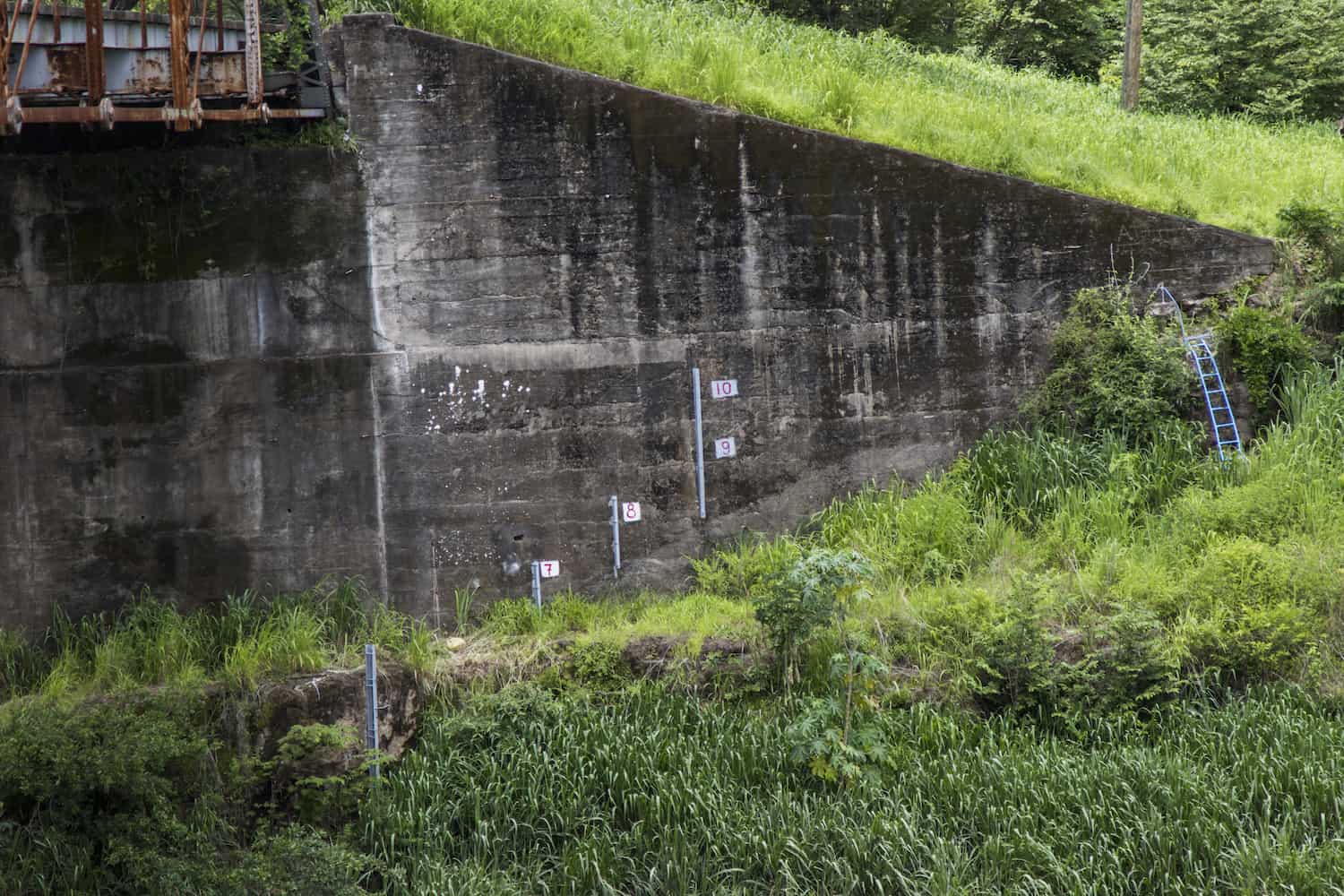
Old data. By the latest official accounting from the Water Department, in 2014, there was finally enough water in the river for everybody — including the environment — thanks to expired concessions and reductions in the water granted to existing concession holders.
But the data upon which the department based that assessment is decades old. Officials assume there is as much water available in the Tempisque as there was during the period 1951 to 1969, when the population of Guanacaste was tiny and the Tempisque’s waters had yet to be exploited by large plantations.
While this may make sense for establishing a baseline for natural river flow, it may not accurately reflect how much water is available in the river for use today. For one thing, changes in land use and climate can affect the yearly pattern and volume of river water. Plus, the relationship between the Tempisque’s flow and Guanacaste’s extensive underground aquifers is poorly understood — at a time when the number of wells tapping the region’s groundwater has exploded.
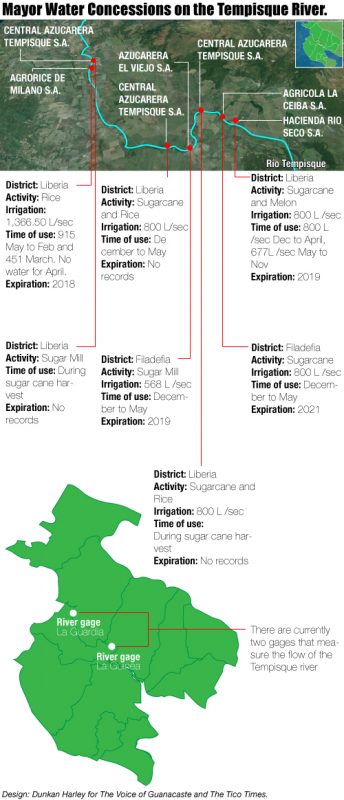
Another factor not taken into account when assigning concessions for the Tempisque’s water is the unknown volume of water extracted illegally from the river. Water Department Director José Miguel Zeledón told a researcher several years ago that illegal water extractions were likely equivalent to 20 percent of the water granted through legal concessions. He recently clarified to The Tico Times and The Voice of Guanacaste that the figure is a general estimate for the entire country and that it’s unknown how much water is taken illegally from the Tempisque.
If the Water Department did want to use current data to make decisions about water concessions, it would be hard to do so. The one reliable gaging station that has measured the Tempisque’s flow since the 1950s is owned by the Costa Rican Electricity Institute (ICE), which decided to shut it down in 2010.
Up until a few months ago, when the station was taken over by the National Water and Sewer Institute (AyA), water officials had to measure water flow manually.
“If the [water gage] had been functioning, we would have monitored and reacted better to the drought in the last few years,” Zeledón said.
In the future, there will be an irreplaceable gap in knowledge of the Tempisque’s flow during the height of the worst drought in decades.
Concessions granted based on faulty data. Despite the lack of current data, in 2014 MINAE granted a large increase in water to Agrorice de Milano to irrigate its rice fields — just four months before President Solís announced the drought-induced state of emergency for Guanacaste. According to the Water Department’s calculation at the time, enough water had been freed up through expired concessions and reductions for other concession holders to justify the increase for Agrorice de Milano.
Additional pressures. Besides a likely excess of water concessions — for surface and groundwater — Yanina Pizarro, a researcher at Costa Rica’s National University, noted several additional factors affecting the Tempisque’s ability to withstand drought. These include deforestation of the mid and lower sections of the watershed, levees built to channel water, and changes in land use in the watershed.
“The most dramatic change is the draining of large areas of wetlands … which were vital for cushioning droughts and producing water,” Pizarro wrote in an email. “The majority of levees and floodgates are in private hands and the government doesn’t inspect them.”
Little to no evaluation of environmental impact
Three of the five biggest concession holders on the Tempisque River have held water concessions since the 1960s and 1970s. As long as they don’t ask for an increase in the amount of water they’re allowed to divert from the river, they are not required to go through Costa Rica’s normal environmental review process, even when their concession comes up for renewal.
In fact, any water concession granted prior to the 2004 regulation laying out the environmental review process is exempt from proving its compatibility with the environment.
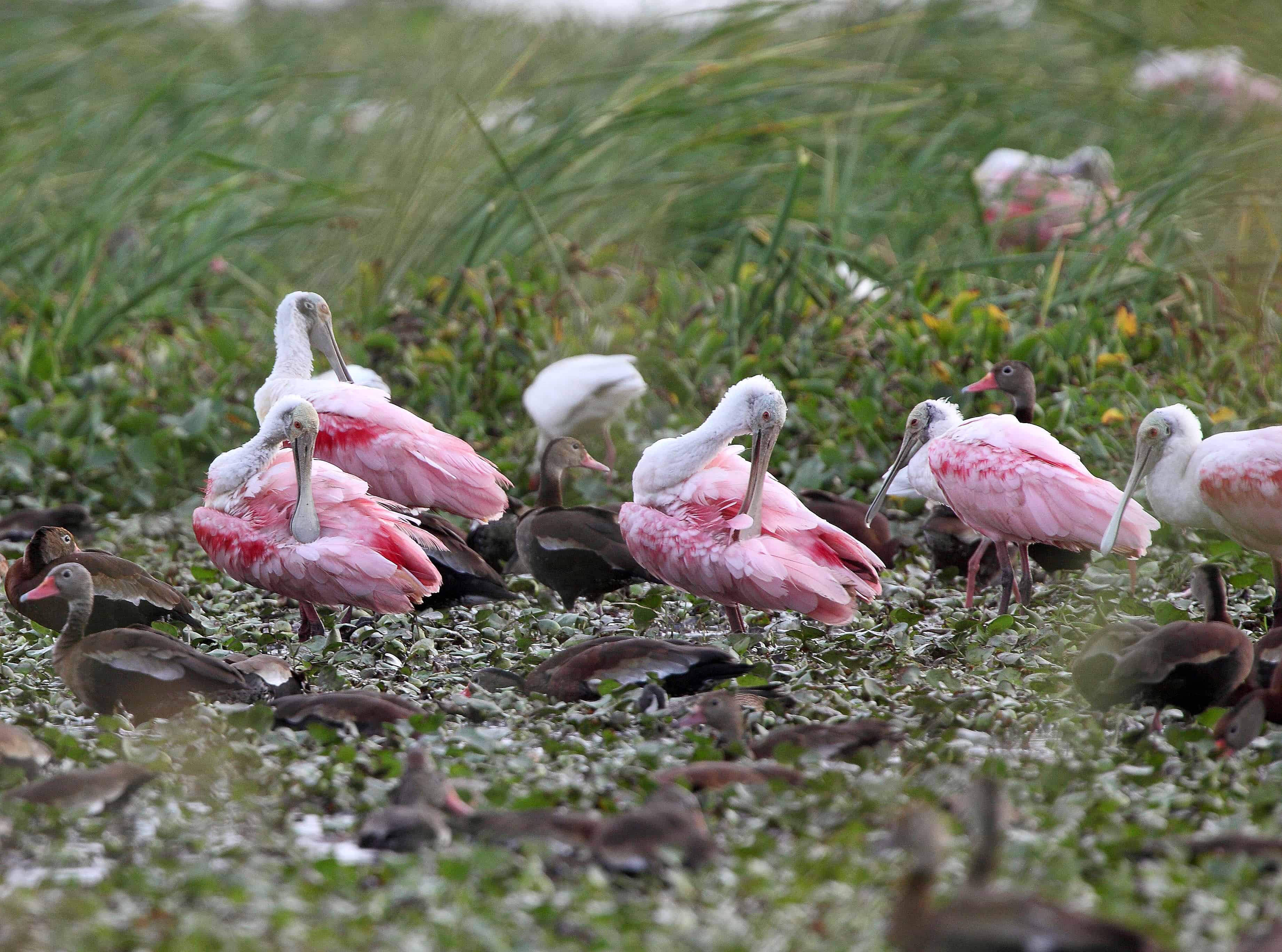
Only two holders of Tempisque water concessions, CATSA and Agrorice de Milano, have had to present preliminary environmental evaluations for requested increases in water. In both cases, the agricultural giants were allowed to present the minimum required evidence of their commitment to protecting the environment: a Sworn Declaration of Environmental Commitment.
The Tico Times and The Voice of Guanacaste examined the files of Agrorice de Milano at the National Technical Secretariat of the Environment Ministry (SETENA), the government department in charge of environmental review, and found:
- No evaluation of the possible effects of the proposed water extraction on the flora and fauna of the Tempisque River;
- No consideration of the cumulative impact of water concessions on the Tempisque River.
The only acknowledged environmental impact was the consumption of water. To mitigate this impact, Agrorice de Milano committed to reforesting the edges of the canal through which it transports water from the Tempisque to its 890 hectares (2,200 acres or 3.4 square miles) of sugarcane and rice fields; to maintain its canals; and to avoid wasting water.
Prior to its most recent, augmented concession, MINAE granted the rice grower a concession in 2007 without any environmental review despite the fact that the previous water concession for the company’s land, which was then owned by Agropecuaria El Mago, apparently expired in 2000.
As of 2014, no new concessions for Tempisque water have been granted, according to the Water Department’s Leonardo Solano. Up until this year, Solano was the department’s only inspector in Guanacaste.
He said of existing concessions, “when they expire, we’ll see whether [concession holders] get a new concession or not, depending on the water level.” The five concessions analyzed by The Voice of Guanacaste and The Tico Times expire between 2019 and 2021.
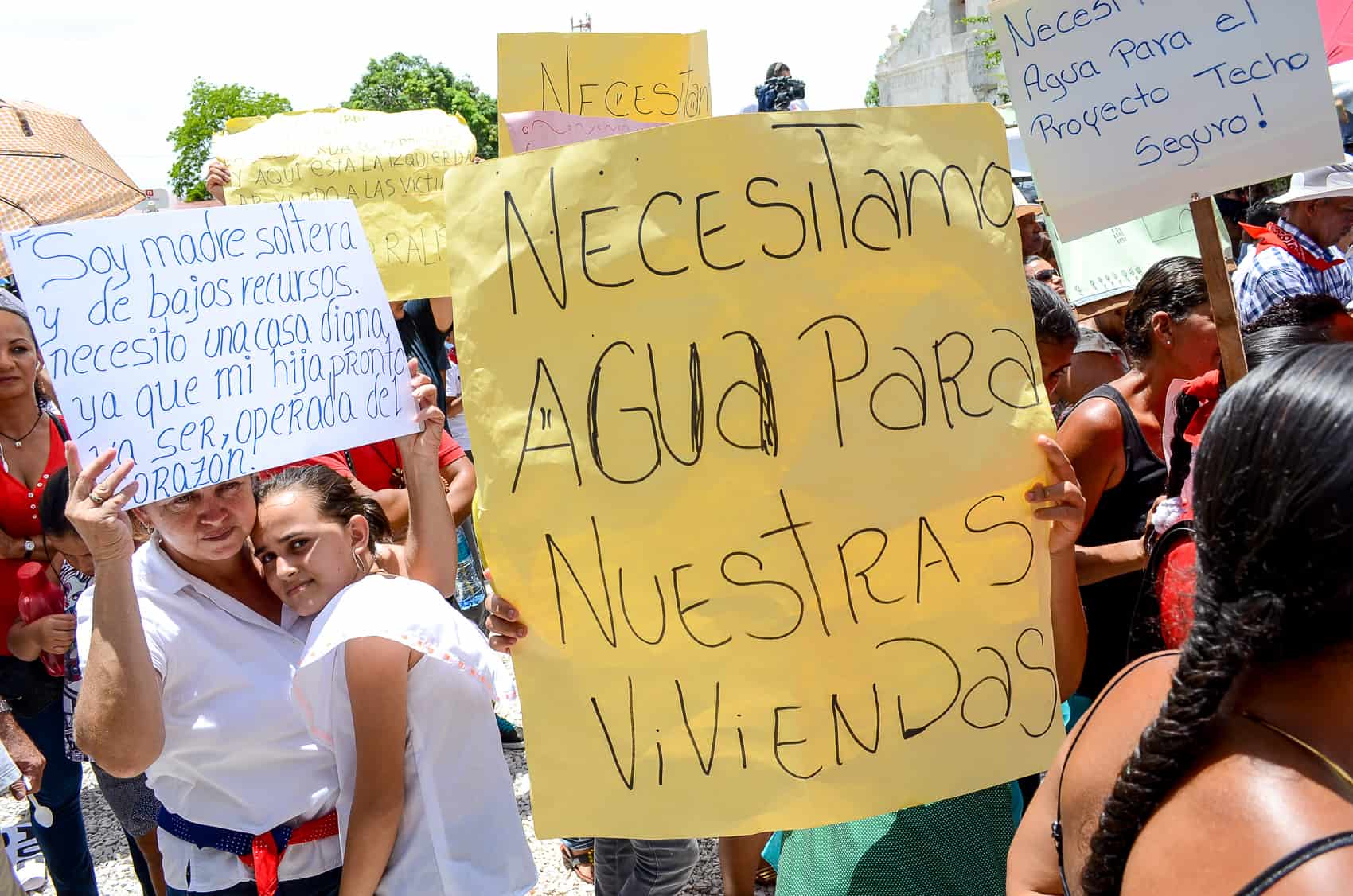
Few resources to monitor, puny muscle to sanction
Costa Rica’s current Water Law was passed in 1942, when Costa Rica’s relatively tiny population of 700,000 people was mostly rural and the country’s abundant water sources must have seemed inexhaustible.
Today, large agribusiness in Guanacaste — principally rice and sugarcane production — competes for water with small farmers and ranchers, communities and a growing tourism industry.
MINAE’s José Manuel Zeledón said he lacks the legal power and enforcement muscle to crack down on illegal water use — of the Tempisque as well as Guanacaste’s other rivers and aquifers.
Still, the files studied by The Voice of Guanacaste and The Tico Times show that MINAE has documented numerous examples of violations without even a figurative slap on the wrist for those responsible, or at least not a documented one.
In 1982, water officials discovered that Catsa was diverting water from the river even though its concession hadn’t yet been approved. The concession was approved in 1984.
In 1997, MINAE found that El Viejo sugar mill was building canals within a wetlands area to protect its sugarcane from flooding in the rainy season, affecting other water users. The company sought out government permission for the project retroactively.
In March of 1998, inspectors found that Catsa, Agropecuaria El Mago (predecessor to Agrorice de Milano) and two other users were using up to triple the amount of water allowed by their concessions. There’s no evidence that the companies were sanctioned.
In 1989, officials found that Catsa was irrigating a different field from the one permitted by its concession. The company was merely ordered to correct the problem.
Besides the violations among legal water users, documents show numerous complaints by concession holders about illegal water use, deforestation and unauthorized extraction of sand and gravel from the Tempisque riverbed.
The 1942 Water Law stipulates that a concession “shall be immediately cancelled” if a concession holder uses more water or for different purposes than stipulated by their concession, or negatively affects third parties or flora or fauna.
But there has to be evidence, which Zeledón said is hard to secure.
“In reality, it’s not that easy,” he said. “You have to prove through various studies and documents that [a concession holder] is noncompliant.” He said in the 1970s, 80s and 90s, the government lacked the technology and human resources to properly patrol the river.
Complicating MINAE’s ability to monitor water use is the fact that it must ask for permission to check the water pumps, dams and canals used by concession holders to extract water from the Tempisque because most are on private property.
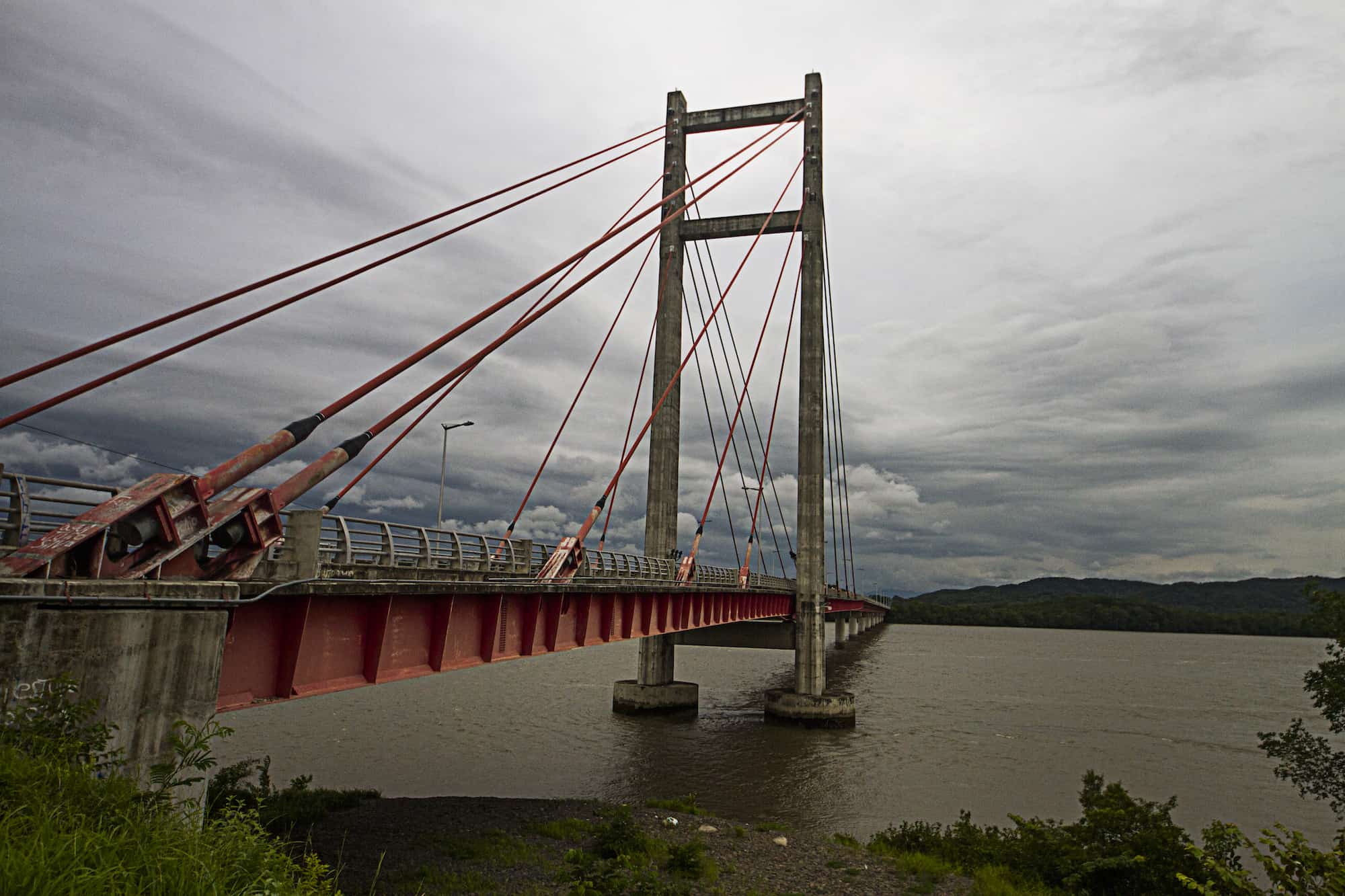
Rains bring welcome relief
It’s been raining in Guanacaste. The river is full again and boats full of tourists again navigate its waters. The National Meteorological Institute is forecasting an intense rainy season for 2016 and ranchers, farmers, communities and nature seem to be breathing easier.
Zeledón from MINAE said recent field testing shows that at least some of the aquifers in Guanacaste have recovered their pre-drought levels. Others, however, have suffered saltwater infiltration.
The threat of droughts similar to the one recently overcome haunt officials and water users. Marissa Marín Vallejos, spokeswoman for CATSA, said production on the firm’s sugarcane plantation and on other plantations that feed CATSA’s mill dropped by some 25 percent during the drought.
Brian Campbell, manager of El Viejo, echoed the assessment of drastic effects, but he said his firm has made large investments in efficient irrigation systems in recent years in order to prepare itself for a drier future.
Water authorities know that climate change threatens to gradually alter the hydrology of Guanacaste and they’re working with the University of Costa Rica and the University of Georgia, using data from NASA, on a more accurate, updated assessment of the Tempisque watershed.
The Tempisque’s one gage station is again collecting vital data from the river. And the government recently hired six new officials to work in the Water Department’s Guanacaste office, although Zeledón said he needs funding for 20 more positions nationwide.
Discussion of an update to the 1942 Water Law has again resurfaced in the Legislative Assembly and among the public, although major divisions exist over the current proposal.
The government is working on long-term solutions to Guanacaste’s water problems. Some of the proposed fixes, like a dam on the Piedras River near Bagaces, have been in the works for decades. The Solís government announced that technical studies and a baseline study of the biological resources that would be affected by the dam commenced in January.
MINAE has also begun to monitor groundwater resources in Guanacaste, with 37 monitoring points.
Jiménez, who co-authored the 2005 study on the Tempisque, thinks there’s likely enough water in Guanacaste for everybody — including the environment. But exploiting it smartly requires understanding how the different components of the region’s hydrological system fit together. It requires knowing and respecting a river that helped the ancient Chorotega civilization flourish, upon which Spanish conquistadors navigated in search of gold, and which now sustains a thriving, modern Guanacaste and, especially, an agricultural industry that helps feed the country and provides jobs for thousands of Guanacastecos.
With reporting from Roberto Acuña and David Boddiger

